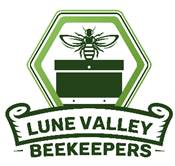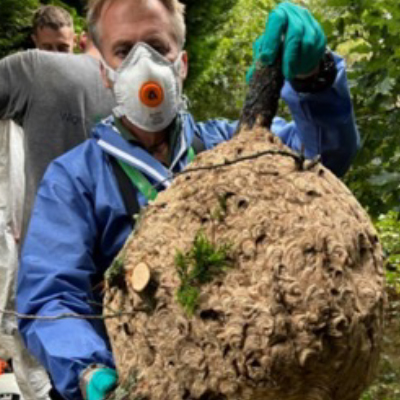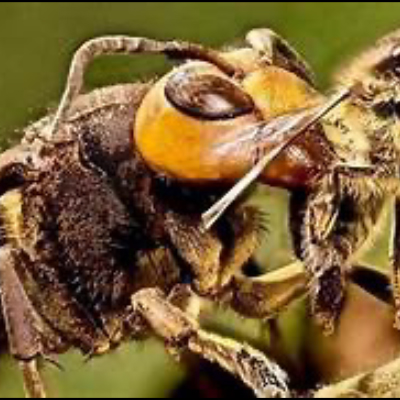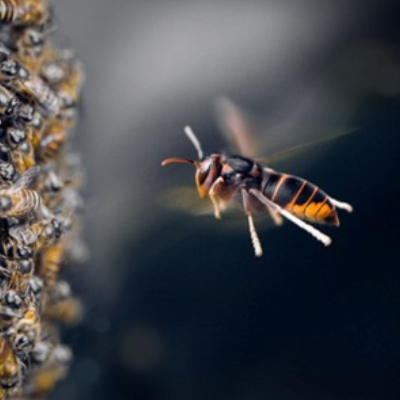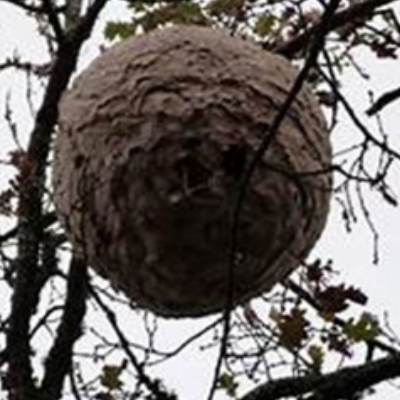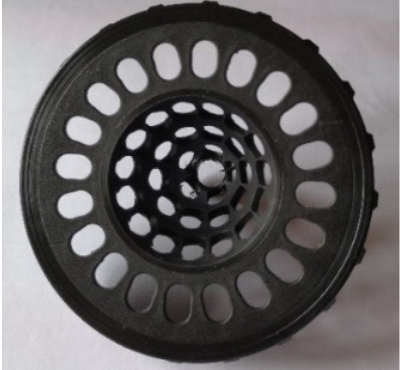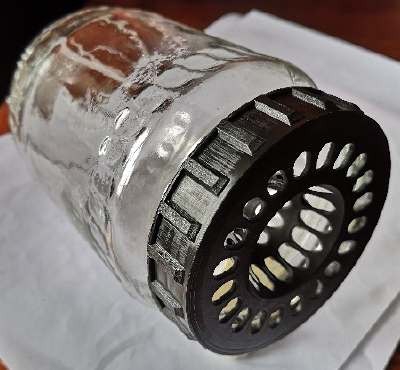The Yellow Legged hornet (Vespa velutina) is one of a family of six hornets indigenous to South East Asia.
It was accidentally introduced into France in 2004 and has rapidly spread through many parts of Europe.
The Yellow Legged hornet feeds on bees and other pollinating insects, so can have a devastating impact on the local insect populations. Each Yellow Legged hornet can eat more than 50 honey bees a day. This drastically reduces the amount of pollination which can take place, which in turn significantly reduces the yield from allotments, market gardens and field crops.
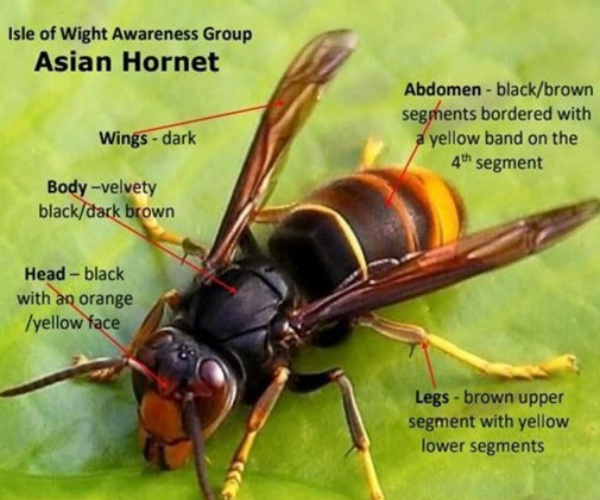
The diagram below shows the size of the Yellow Legged Asian hornet compared to other common UK insects. The diagram shows comparative not actual sizes.
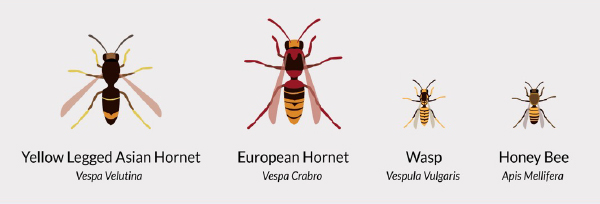
The annual lifecycle of the Yellow Legged Asian hornet begins around February/March when the queens that were mated in the autumn before come out of hibernation and start to build their paper nests, normally the size of a tennis ball. This is the primary nest.
When the first generation of workers reaches the adult stage and numbers in the nest reaches 50-100, they usually build another nest not very far away. This second nest is called the secondary nest and tends to be built between the months of May-July.
It is at this time of the year that the workers also start visiting flowers and trees to bring back nectar for carbohydrate and prey on other insects for protein to feed the larvae back in the nest.
During autumn, the nest will produce up to 500 virgin queens, know as gynes, and many more male hornets for mating. After the mating period, the newly fertilised gynes will leave the nest and find somewhere suitable to over-winter, while the old queen will die, leaving the nest to dwindle and die off. The following spring, the founding queens will begin building their new colonies and the process begins again.
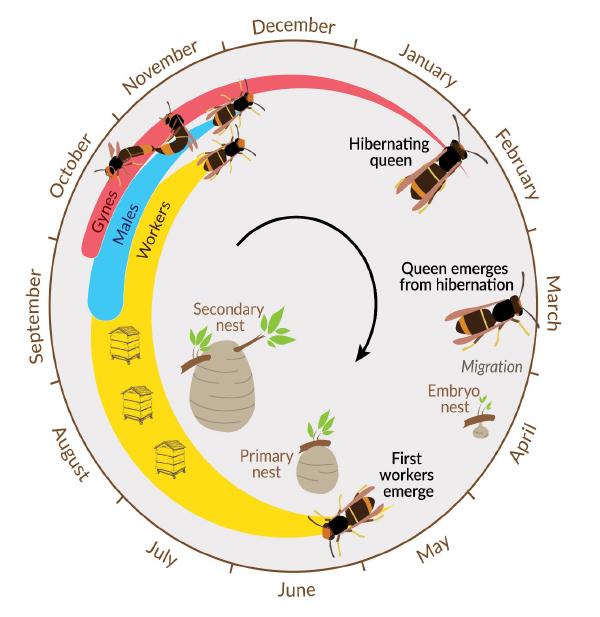
Although Yellow Legged hornet secondary nests are large, they are not always easy to spot! Should you find an Asian hornet nest, report it as soon as possible.
Under no circumstances should you attempt to remove it as this is a dangerous task requiring specialist knowledge.
Yellow Legged Asian hornets “hawk” outside hives to capture, decapitate and eat honey bees. Each Yellow Legged hornet will eat up to 50 honey bees every day.
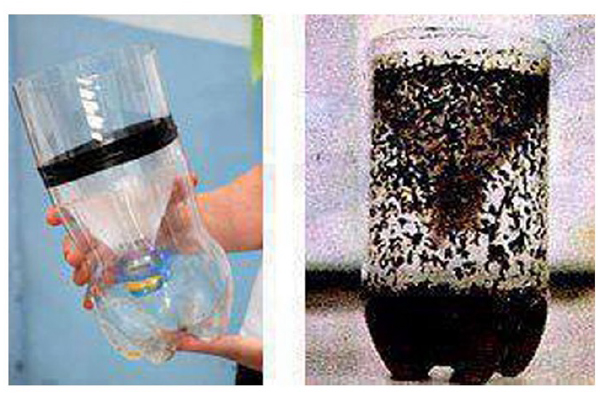
So how can we prevent the Yellow Legged Asian hornet from becoming established in the UK?
- By trapping new queens as they emerge from hibernation (February to April)
- By monitoring workers as they forage to help find nests (March to August)
- By engaging professionals to destroy nests and their inhabitants before the new queens hatch (June to October)
Bottle traps should not be used as they can trap and kill more insects than the Asian hornets!
Traps should:
- have a 7-8mm diameter entrance
- have a 6.5mm exit
- be placed at least 1.5m from a hive
This ensures that smaller, pollinating insects can escape from the trap.
There are many designs of trap available. This one is effective and cost £5.
To order one click here.
Traps need to be baited.
In spring and early summer use:
- a syrupy solution made by combining equal parts of sugar and water
- ripe and decaying fruits such as plums or bananas
In mid summer and autumn use: - protein-rich food sources such as small pieces of raw chicken or fish canned cat food.
Any Asian hornet sightings should be reported using one of the following:
Asian hornet Watch app for IPhone
https://apps.apple.com/gb/app/asian-hornet-watch/id1161238813
Asian hornet Watch app for Android
https://play.google.com/store/apps/details?id=uk.ac.ceh.hornets&pli=1
Online recording form
http://www.brc.ac.uk/risc/alert.php?species=asian_hornet
TAKE A PHOTOGRAPH OF ANY SIGHTING IF POSSIBLE.
You will be asked to complete a short form asking:
- What you saw
- Where you were
- Who you are.
Any Asian hornets caught should be carefully frozen and kept safe. They will be collected and taken for DNA analysis to help establish the origins.
